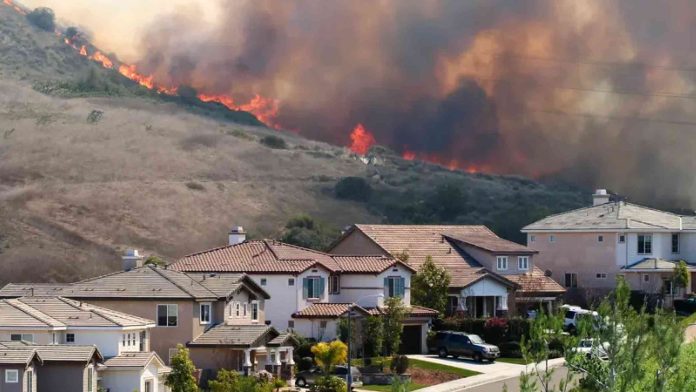The northern hemisphere has had a large number of intense wildfires in the first half of summer, carrying vast amounts of smoke across Eurasia and North America.
Research by the Copernicus Atmosphere Monitoring Service (Cams) showed large-scale and intense wildfires had been developing throughout the late spring and summer, with numerous fires burning in Canada, Alaska and eastern Russia.
These wildfires are generally caused by long periods of hot and dry conditions in areas of high vegetation, and have resulted in increased carbon and smoke emissions. Smoke has also begun to extend much farther north, reaching across the Arctic Ocean to the high Arctic.
Emissions from Russian wildfires in June and July were higher than for the preceding two years, and fires in the region of Amur Oblast led to the estimated release of 17.2 megatonnes of carbon for the two-month period, the highest in 22 years.
Canada has also had some of its highest totals on record, with total carbon emissions of 11.1 megatonnes and 13.2 megatonnes for British Columbia and Alberta respectively across June and July.
Mark Parrington, a senior scientist at Cams, said: “We have been closely monitoring boreal fires in Cams over a number of years and noted some particularly extreme wildfire emissions and atmospheric impacts during that time, particularly in Canada, eastern Russia and the Arctic.”
Increasing wildfire activity is a major factor in these rising smoke emissions.
Guillermo Rein, a professor of fire science in the department of mechanical engineering at Imperial College London, said: “In recent years the fire season is expanding, starting earlier and lasting longer. But it’s not just the fact the wildfire season is widening, it’s also that the intensity of wildfire season is becoming unprecedented.”
According to official Russian figures, the number of wildfires this year has decreased by 30% compared with the previous year, but the area burnt is 50% larger, highlighting the intensity of the wildfires.
These increased smoke emissions have led to very high levels of air pollution and can lead to various health complications.
“In the short term, the most obvious complications are to respiratory systems, proving particularly dangerous for people that have underlying conditions like asthma, heart disease and lung disease,” says Dr Marina Romanello, a research fellow at the UCL Institute for Global Health.
“However, as the incidence of wildfires is increasing, people are being repeatedly exposed to acute levels of wildfire related air pollution, increasing their risk of developing chronic conditions like cardiovascular disease and cancer.”
Concentrations of very small harmful particulates in the smoke, known as PM2.5, have been found to be several times higher than the World Health Organization’s recommended 24-hour mean exposure threshold across a widespread region that includes eastern Mongolia, north-eastern China and northern Japan.
Romanello said: “PM2.5 particles are … able to go very deep into the lungs, past the lung-blood barrier, and enter the bloodstream, making these high levels of smoke emissions particularly concerning.”
While 2024’s estimated wildfire carbon emissions are very high so far, the season is still well short of the catastrophic 2023 season, when much of North America experienced record high levels of PM2.5.
Rein said: “We don’t think this season is going to break any records but it’s a strange situation where we’ve been seeing the worst in the records for so long that when you see it you think things are OK, when actually it’s still pretty bad.”

